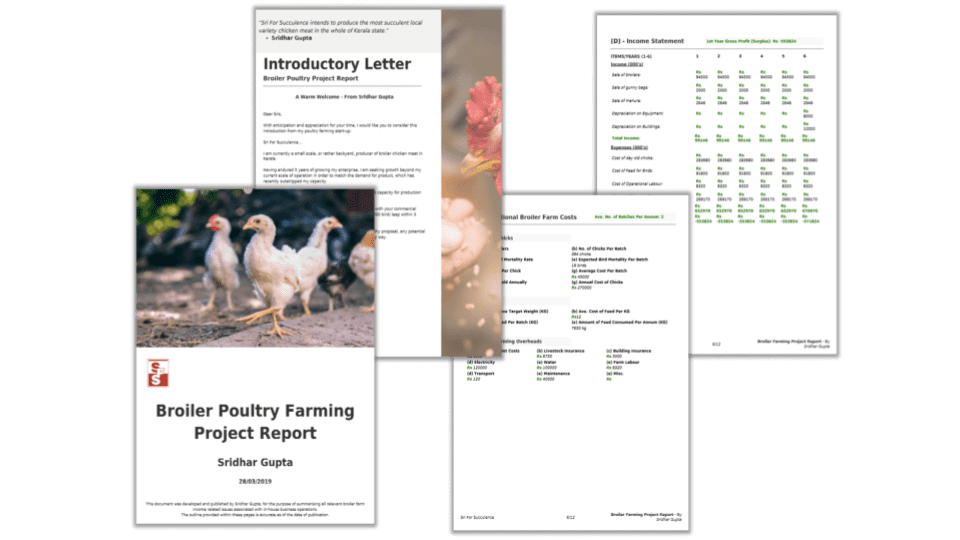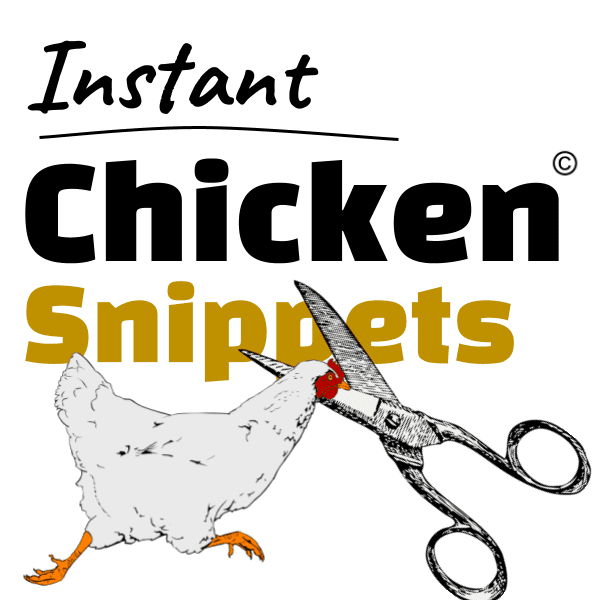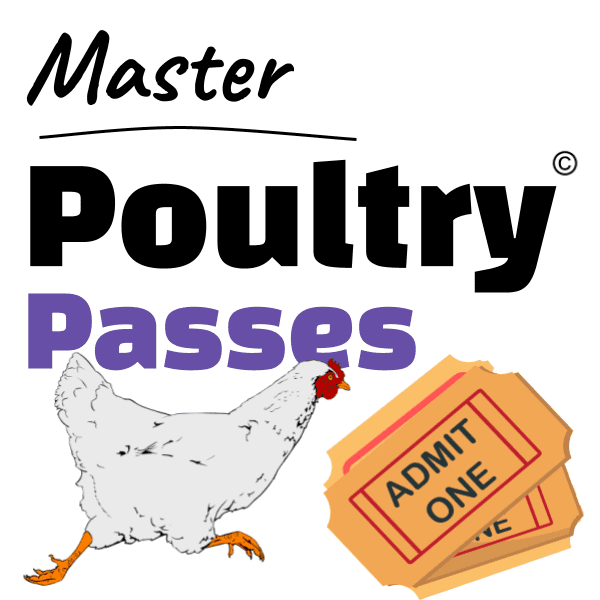People buy value.
Not products, nor services.
People invest.
In other words,
We don’t mind giving away something today in order to make a gain on this tomorrow.
In relation to your business planning, this is a much bigger concept than you think.
By understanding this concept alone…
…you can NEVER run out of profit-making ideas in any market.
Whether in an up economy or down economy.
Sound impossible?
It isn’t.
And there’s no catch to this…

Write Your Poultry Business Plan -
in Just 90 Mins!
Poultry Project Reporter 2.0 - fastest way to write your project report online.
Get Poultry Project Reporter 2.0[Other than hard work of course, then again…we’re not afraid of that]
Here’s how value can work for your farming business –
I call it, Value Leader Marketing…
The agri value chain
Agricultural products start off as raw ingredients.
Whether crops or livestock, they are:
- grown,
- brought to maturity,
- taken and prepped for market,
- sold (perhaps many times over) and,
- end up on the meal table.
The entire process is called a value chain.
Here’s an example of the poultry farming value chain…
Source: Arbor Acres
Simply follow the red arrows down, you’ll see value being added.
Straight from parent stock management…
…all the way to retail.
Every step of the way, a participant in this chain receives a pass & then passes on until,
The goal is scored at the end i.e. chicken meat lands on the table of a household.
Without the cooperation of each participant in the chain,
You simply would get the chicken at the end.
What’s missing?
A big omission in this broiler chicken value chain example from Arbor Acres is:
Feed & supplements.
Accounting for up to 70% of direct costs + your primary farming input,
A great deal of your value-added,
And costs incurred,
…comes from this category alone.
Aside from this, you have also:
- Equipment dealers & manufacturers
- Cleaning products providers
- Support services
Every participant within the chain (& supporting it), much like a relay race,
Does their bit to safely:
- receive
- and then to pass on
…the valuable cargo.
Teamwork.
Seamless. Efficient. Selfless. Focused on the end goal.
Adding value.
Demand generation
What drives the chain is downstream demand.
Every step, or link in the chain, is directly dependant on the link immediately after,
And also cumulatively,
…on the subsequent links further down the line.
Much like plumbing:
- What draws water through the system is use of an outlet (tap) at the far end.
- The water only gets delivered properly if the pipes
- Hold up and don’t spring leaks
- Run freely without blockage
- Don’t leach contaminants into the supply
But all going well, there is a great benefit for the end user…taps, showers, heating etc.
The same applies to the farming value chain.
The outlet (tap) are the hungry households needing feeding, every day.
The table above gives an idea of the national demand for chicken meat, from the top 10 chicken consuming countries in the world.
[Per capita = per person per year.]
That’s a lot of demand.
Enough for not only domestic production, but also for international export too.
Then again,
The figures above are:
- Macro (big picture, large scale)
- Based on current consumer trends
What influences these figures?
And is there any way a value chain can influence (even, GENERATE) demand?
Source: Al.com
From this US example above, it is clear that by offering:
- a more versatile array of products (processing),
- at a competitive price to alternative meats
- with a homegrown flavour
…it is possible to generate significant economic demand for your product.
Source: Al.com
Here we see that dietary trend or even fashion can have a knock-on effect on bottom-line poultry sales.
These are just some of the ways in which participants in the farming value chain can encourage consumer demand.
Tighter communications and data integration with retail can assist farmers with foresight on-trend.
But that’s just B2C (i.e. what business can do to increase consumer demand)
What about B2B?
Say you are a hatchery,
Your business output is the supply of day-old chicks to farms.
When a farm is ready to buy a new batch, they would come to you.
However,
How can you make it that they should come to you?
Simply, add value.
Here are just a few broiler farm targets, which are directly impacted by your hatchery business:
- Mortality rate / liveability
- Health of flock
- Ability to adjust to farm conditions
- Feed conversion
- Growth rate
- Product quality
- Gross profit
This is your value checklist.
Properly promote your value-addition to each of the above-listed value categories,
To existing farmers as well as new entrants,
And drive demand for your hatchery business.
Become a most valued participant
Given the example above, we can see how proper promotion of value-addition can result in increased demand.
Now multiply that.
If every participant in the marketplace refrained from just selling,
But rather took ownership of adding-value to the entire value chain – the results would be MASSIVE.
The rub-off for the industry or niche would be increasing consumer demand.
Open taps, everywhere.
And adding value is simple.
It’s all about giving somebody else something that will help them do what they do:
- More effectively
- More efficiently
- More profitably
- More consistently
In a word, SERVICE.
But is value all output for no return?
Remember what we said at the beginning,

Read The Poultry Business -
Like Never Before!
Chicken Snippets Newsletter - deep poultry analysis to sharpen your acumen, by email.
Get My NewsletterWe don’t mind giving away something today in order to make a gain on this tomorrow.
There is a very real and rewarding return on giving value.
The only caution, however, is:
You need patience.
Just like any other type of financial investment,
You set out a plan, make the trade and WAIT until the date when you redeem the reward.
So, what’s stopping you from dominating value in your marketplace (or being the biggest giver)?
Well…
Where do you start?
Step #1: Know your value chain
- Much like the diagram earlier on with the downward arrows in the poultry value chain, simply map out the participants in your space.
Step #2: Know EVERYBODY’S business
- No longer just be concerned with your direct customers
- Value every participant’s contribution
- …every link presents a potential for your business to give (invest) value
- Value every participant’s contribution
- Speak with participants
- Interview decision-makers, managers and front end service staff
- …get their point of view on what they want to deliver to their customers
- Interview decision-makers, managers and front end service staff
Step #3: Pull together a library of value ammunition
- Collate a resource bank of value nuggets (for each participant group)
Step #4: Produce a value profile for each participant group
- Summarise a general narrative on value for every link in the chain
- […attach facts and figures to the conclusions drawn for justification]
Step #5: Draft a value strategy
- Plan a vision and course for how you will deliver value to each participant group
- …a high-level document with definitive values laid out.
Step #6: Detail a value action plan
- Step-by-step plan of action of how you will hit the mark of value throughout your chain
- …include a budget with processes & procedures – named personnel responsible for activities also. [Like a project plan.]
Step #7: Feedback communications & measuring success
- Value is built on maintaining good communications
- …provide clear channels of 2-way value conversations with every participant group
- …value is constantly moving – remain nimble with your ability to respond to changes in the value conversation
- Your investment in value WILL HAVE bottom-line profit impact
- …know where to look and how to account for your value ROI
Talking of Return-On-Investment – what rewards can you expect from spending so much on value?
Here’s what a retailer (for example like a wood timber shop) could expect from leading on value in their market:
Source: Small Business Marketing Professional
The reward of becoming the value leader in your market is that you will be the most valued participant.
Your B2B and B2C neighbours will vote with their favour in:
- recommendations and referrals
- better public relations
- economic savings
…in summary, a much more profitable business.
And long-lasting effects too.
This means multiplying the money flowing back into your business,
From every grain of input spent.
The bottom-line…
Giving value will cost you, but will be profitable.
And long-term sustainability of your business, therefore, relies on your ability and willingness to give: value.
Giving value takes strategy and exercise of genuine care for the needs of others.
Plus, you’ve got to be patient and wait for the harvest of reward.
BUT – the rewards are well worth the wait.
Try it.
Now over to you…
Are you well aware of your agri value chain?
Have you only just heard of value chains?
Either way, I’d be interested to hear from you.
(I read every comment.)
Speak soon,
Temi

Master The Poultry Business -
Like a Pro!
Poultry Courses Online - most actionable and interactive online poultry course.
Join Poultry Courses Online
Leave a Reply